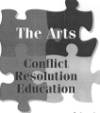|
from The Worldview Literacy Book copyright 2009 back to worldview theme(s) #47 |
| Discussion #47A: Attitudinal
fixes can solve problems or resolve conflicts which involve attitudes.
Attitude formation can be traced to various inputs: thoughts,
beliefs, emotions, feelings and prevailing disposition toward acting on
these inputs. Generally,
people's attitudes change for various reasons, including:
1) as
a result of learning, 2) in response to reasoned persuasion directed at
them, 3) in response to an emotional appeal directed at them, and 4) to
relieve tension by reducing or eliminating a perceived inconsistency or
cognitive dissonance.
Problems involving a human societal dimension, attitudes, value
judgments and technology may be solved by either attitudinal or
technological fixes (theme #46A)—or a combination of both approaches.
Those with "The Attitudinal Fix Mentality" like to see
people talking, cooperating, and peacefully resolving conflicts to the
mutual satisfaction of all. (See
Figure #47a.)
Those who are provisional, possess a sense of fair play, good
interpersonal communication skills, and emotional intelligence are well
equipped to facilitate, mediate, arbitrate, and resolve conflict.
Recognizing that both resolving conflict and artistic creation
often involve coming to terms with certain emotions, many educators
teach conflict resolution in conjunction with arts (Figure #47b).
Given that suffering often precedes both deeply felt art (theme
#12) and conflict, such courses may attempt to promote healing.
Many disputes involve situations characterized by tension,
antagonism, and sides whose motives, purposes, and intentions seem at
odds. The most difficult of
these are termed intractable conflicts—where there are complex issues,
deep-seated, often unacknowledged differences in worldviews,
communication difficulties, and fear.
The people on opposing sides often
feel threatened by their opponents—indeed they may feel that their
sense of identity, cherished beliefs and way of life are being attacked.
Such conflicts may also involve material goods, resources, and
real or potential impacts on people and their environment—impacts that
are threatening.
After initiating or improving dialogue, mediators can help the
disputants find bridge values—shared
values representing common ground a settlement can be built on, or
bridging the gulf of misunderstanding.
Similarly,
disputes with a legal basis can sometimes be settled using mediation
rather than pursuing costly lawsuits in court.
Where two nations are involved, diplomacy can avert that ultimate
technological fix: war. After those on opposing sides talk, the
technological fix finally applied may be less heavy-handed than
otherwise. Perhaps it is
built around an appropriate technology solution, or shared
responsibility for technology-based monitoring of compliance.
Ideally, seemingly intractable conflicts can be ended with
settlements that promise to last for three reasons.
First, they have mechanisms for a return to peaceful stability
after anticipated (or unanticipated!) perturbations occur.
Second, |
Discussion—continued they involve both sides not only compromising, but
also feeling justice has
been done. (Different types
of justice are identified in Figure #17a.)
A settlement perceived as
just means both parties view it as reasonable, proper, lawful, right,
fair, deserved, merited, etc. Justice
seems generally connected with fairness—in particular with issues of
equal treatment, the degree to which exercising freedom and liberty is
to be allowed, and rewards for contributing to the common good.
Third, lasting settlements are possible when both sides conceive
of the common good as being held together by an unbreakable bond between
them. This is built on a
sense of mutual dependence—where it is realized, as the Dalai Lama
puts it, "destruction of your enemy is destruction of
yourself." #47B: In his classic A Study of War (see
Discussion, theme #46B), Quincy Wright identified "attitudes
concerning basic values" as one of the causes of war. Two nations wishing to prevent war between them are advised
to better understand
1) what each society holds
in high regard after making value judgments and 2) how each makes sense of the issues in dispute given different
cultural traditions, beliefs, and worldviews.
An update to his work might stress the importance of arms
control.
Of course, nations of conscientious objectors don't go to war.
Such pacifism can take different forms.
Absolute pacifists hold that all
killing, all forms of violence, and all war are morally wrong.
Conditional pacifists, while much preferring peace, accept some
of these under certain conditions.
Examples of conditional pacifism include believing in capital
punishment, accepting use of violence to defend one's self or family,
defencism and pacificism—but opposing all other killing.
Pacifism represents one response to evil.
Criticisms of it are built around a secular aspect of the
philosophically famous problem of evil—namely
how should society fight human’s wicked and evil acts?
Many absolute pacifists feel that fighting them with evil
(violence, vengeance, capital punishment, etc.) is both morally wrong
and contradictory. They don't believe good can come out of more evil.
Critics argue that if evil is left un-checked, unpunished, and
not countered with strong action, then more evil will result. World
War II is often cited to justify their argument: if fascist aggression
had not been opposed, more people would have suffered under the
oppressive, authoritarian rule of the aggressors.
A similar dilemma faces victims who agonize over whether to offer
forgiveness or seek vengeance (themes #17B, #17A).
Non-violence provides an alternative to both passivity and
violent action, instead advocating other means of popular struggle such
as civil disobedience, boycotts, consciousness raising, etc. It recognizes the power of those in authority depends on
the consent and cooperation of those they wield power over.
In deliberately withdrawing this consent, a non- violent protest
seeks to invalidate the oppressive authority. |
|
Figure #47a Lessons
from Game Theory Resolving disputes to mutual satisfaction means making it a non zero sum game in which both sides win. Researchers have shown that a Tit for Tat strategy is a good one to use in such games. They assert its importance in the evolution of co-operation. Similarly, author Robert Wright says "perception of non-zero sumness underlies religious tolerance."
|
Conflict Resolution Education & Arts adapted from National Endowment for the Arts booklet |
